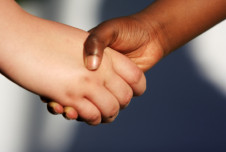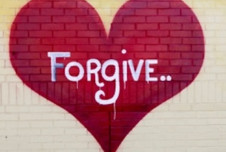If you had experienced a serious hurt or offense 25 years ago and you wanted to forgive, you generally would look to simple willpower or perhaps religion for the strength to do so. Science had little to offer. Back in 1998, Michael McCullough and his colleagues found 58 good studies about the nature of forgiveness. As for interventions, only a handful of studies—and a meager handful at that—had been published. And most of them were demonstration experiments with very few participants.

In early 1998, research into forgiveness dramatically accelerated. In the 25 years since then, thousands of studies have been done. Recently, the new book I co-edited with Nathaniel G. Wade, Handbook of Forgiveness, 2nd edition, includes over 30 qualitative review chapters. Each chapter described multiple studies on such things as how forgiveness is related to mental health symptoms, addictions, and post-traumatic stress disorder (PTSD), as well as to well-being and flourishing. Other reviews of research described how forgiveness can benefit relationships with loved ones, work colleagues, friends, and societies. Still other research detailed how it can lead to lower cortisol (a primary stress hormone) and higher oxytocin (the so-called bonding peptide) soon after experiencing it. They showed how heart rate variability, a measure of ability to self-soothe, increased. Some found better overall physical health if forgiving is practiced often.
So, in that brief 25 years, we have found out much about forgiveness—and how to help people who want to forgive to do so more efficiently and effectively. We also know that forgiveness alone does not have to do all of the work in dealing with injustices. People can seek justice, relinquish the matter to a higher power, tolerate the injustice, forbear, or accept and move on with their lives. They can also lower their emotional arousal through practicing mindfulness. But for those who choose to pursue it, forgiveness is very beneficial. Here are six new findings that can help you reduce your interpersonal stress, depression, and anxiety, while increasing your flourishing and hope.
1. Think about forgiveness like a scientist
In recent years, scientists have found three major ways to help people forgive. First, we can ponder how forgiving helps the forgiver. Second, we can understand the role of perceived injustices to help us to deal with the injustices life throws at us. Third, we can use many ways of dealing with injustices, forgiveness being only one.
By thinking about the benefits to themselves, people get a leg up on forgiving. Merely dwelling on the benefits for about 10 minutes can motivate forgiveness. We actually found that from our randomized controlled trials studying the REACH Forgiveness intervention. We had people spend comparable time to the time spent in forgiveness groups familiarizing themselves with the benefits of forgiving to the forgiver. Whether they contemplated benefits to themselves for eight hours, six hours, five hours, two hours, one hour, or just 10 minutes, they had about an equal amount of forgiving—and it was substantial, though not as much as the active interventions. Funny how science sometimes works: Even our “placebo control group” consistently helped people forgive.
The essence of science is to keep an open mind to new and often unexpected possibilities. Then, we test them out and see which ones work.
2. Remember that we have options
By recognizing that we have options to handle injustices other than forgiving, we take pressure off of forgiving.
We all “keep score” after we’ve been hurt. The injustice gap is an ongoing subjective tally of how much perceived injustice is attached to each hurt or offense. The injustice gap was proposed in 2003, but a good measure did not exist until 2015. Theory (and experience) told us that our sense of injustice increased if people refused to acknowledge that they had hurt us or kept piling on hurts. However, our sense of injustice was usually reduced when offenders apologized, made amends, and sincerely asked for forgiveness. The larger the perceived injustice gap, the more difficult it is to deal with. In fact, sometimes the injustice gap seems so large it seems like a canyon that feels impossible to leap rather than a gap we can step across with forgiveness.
By realizing that forgiveness does not have to do all of the heavy lifting needed to deal with large injustice gaps, people’s flexibility is increased. We can mix many actions to reduce their sense of injustice to where it is manageable by forgiving. Here are some options.
Actively wait. We might use active waiting. Most forgiveness happens quickly without much effort. McCullough and his colleagues invited people whose hurts were raw to rate their forgiveness daily for 18 days. On the average, most forgave, accepted, or just forgot within 72 hours. Actively waiting worked well. Except when it didn’t. McCullough and his colleagues plotted individual responses. Some instantly forgave. Others quickly did so. Some eventually did so. Most people were quite resilient. But some seemed stuck in the same level of unforgiveness for weeks. Others just seethed and got worse as the weeks went on. The lesson: Forgiveness is very individual. We also know that even if we usually are quick to forgive, we aren’t always equally willing to let go of resentment.
Look for justice. One way to reduce a large perceived injustice gap is to see justice done. Sometimes that is as simple as seeing bullies get their just desserts—like the guy who ran me off the road on my bike one morning and got a ticket for speeding within one mile of his disrespectful, aggressive driving. I didn’t hold a grudge. He got what he deserved.
Stop striving. We can reduce our sense of injustice by actively turning the matter over to God, fate, or karma. When we stop striving, we can begin thriving.
Decide to put up with it. There are four levels of putting up with the injustice. First, we could just minimize it—no big deal. That little cognitive trick rarely fools anyone, least of all ourselves. So, that way of putting up with an injustice is not usually recommended.
Second, we could grit our teeth and tolerate it. That has costs that can twist our gut and increase our internal stresses even though it might ease external and interpersonal stresses.
Third, and better for relationships, we could forbear. Forbearance is putting up with the wrongdoing for the sake of the relationship or group harmony. This does not have to mean that we cave in and do turtle to keep from ruffling our partner’s, boss’s, or work colleagues’ feathers. But forbearance can actively embrace refusal to respond negatively so that we benefit our relationship.
Fourth, and better for our individual peace of mind, we could practice acceptance. We could accept that life is too short to hold on to bitterness. Then, when we feel a trigger to negatively react, we might practice mindfulness.
Of course, there are not-so-good ways that we do try to reduce unforgiveness. Condoning or justifying or excusing or forgetting what was done will not lead to healing, necessarily. And, of course, it doesn’t help to seethe in grudge-holding or seek vengeance either passively or actively. That’s why we need to think flexibly about our options, instead of fixating on forgiveness. That’s not the only way to deal with injustices. We can mix these legitimate coping strategies to shrink the injustice gap.
3. Get ready to try actively to forgive
Think about the most difficult thing you ever successfully forgave. By remembering that, you can prove to yourself that you can forgive—even the hard things. Then commit yourself to trying to forgive and to spend time forgiving.
Analyses of many studies show that time spent trying to forgive is the best predictor of successful forgiving. Remind yourself of the benefits to yourself of forgiving. They are many. Forgiving improves your relationship, mental health and flourishing, spirituality, and immediate physical health and long-term physical health, if you practice forgiveness over time. Decide whether you need to try low-effort approaches first or need a full-court press to forgive. If you opt for therapy—one of the full-court presses—it is good to do a six-hour or two-hour DIY forgiveness manual first to make your therapy time smoother.
4. Consider shortcuts
People seeking to forgive have an abundance of options. Here are some shorter-term versions.
Religions and philosophies have touted forgiveness for hundreds of years; your minister, rabbi, imam, or priest can lay out the path for you. Supportive communities that practice forgiveness have developed methods that are tried-and-true. The internet provides a dizzying array of choices, from Greater Good to the Mayo Clinic and far beyond. There are brief videos, podcasts, blogs, and helpful (uh, and a few unhelpful) reactions to posts. Many of the internet sources draw (unsystematically) from published protocols that have been vetted by randomized controlled trials. Some psychologists have websites that offer resources.
5. When needed, rely on evidence-based interventions
Evidence-based interventions are often longer-term fixes. In 2014, Nathaniel Wade and his colleagues analyzed 53 randomized controlled trials to promote forgiveness. The studies sampled around 2,300 participants. They found four major things:
- Two programs each had been supported by about one-third of all studies (my REACH Forgiveness model summarized in the sidebar below and Robert Enright’s process model).
- Both programs were equally effective per hour of treatment, and both were equal to all other programs combined.
- The more one tried to forgive, the more forgiveness one experienced.
- Forgiveness interventions not only helped people forgive, they also were associated with reduced depression and anxiety and increased hope.
These programs have been vetted worldwide and are available in psychoeducational groups, DIY workbooks, psychotherapy, couples therapy, and group therapy. A newer qualitative review of research since the 2014 meta-analysis, by Nathaniel Wade and Marilyn Tittler, sampled around 1,800 participants. Its findings supported the 2014 findings.
A huge study at six sites in five countries on four continents was recently led by Man Yee Ho from Chinese University in Hong Kong. It investigated the effectiveness of REACH Forgiveness using a two- to three-hour DIY workbook. The workbook was a response to the global mental health movement that seeks to make mental health treatments available to people who cannot afford the money or time to do psychotherapy.
Ho’s colleagues sampled almost 4,600 participants (more than doubling the samples of all previous randomized controlled trials added together). They found increases in forgiveness and flourishing and decreases in depression and anxiety. In addition, trait forgivingness (i.e., one’s general disposition to forgive) increased, suggesting that people became more confident that they could forgive future transgressions. The workbooks are available free of cost in English, Spanish, Mandarin Chinese, Ukrainian, and Indonesian—able to reach over two-thirds of the world’s population in their first language. The REACH Forgiveness steps have also been embedded within couples therapy and self-forgiveness treatments.
6. You can forgive even the hard-to-forgive hurts
Three particular types of hard-to-forgive hurts require special effort. These are people who hurt us often, huge hurts, and a combination of repeated huge hurts.
The frequent offender. Forgiving a romantic partner, work colleague with whom you must have frequent contact, or toxic family member is a challenge. These people create large injustice gaps that keep growing, especially if each instance is not dealt with quickly. Co-rumination between the two parties—in which both parties are marinating in how deeply wounded they are—or co-rumination involving a trusted and supportive third party who feeds our hate can keep the wound fresh. A well-meaning third party can, while being empathic and compassionate, keep us stirred up. How can repeated hurts be forgiven?
After several hurts or offenses, we tend to generalize from events to the person. We think, I can’t forgive her! But understanding how generalization happens gives us a clue to forgiving the hard-to-forgive. We pick a single hurt—usually one that might be symbolic of other hurts from our offender—and we forgive it. Then we pick another hurt. And another. Generalization can then work for us because we can get to the place where we think, I forgive her. So, Tip #6a is this: For repeat offenses, forgive one hurt at a time.
The big event. Sometimes it is the sheer magnitude of harm that makes it seem impossible to forgive. The injustice gap seems as large as jumping the Mississippi River. Some people, by willpower, can forgive such events, but for most of us who do not have that superpower, we must eat away at the size of the injustice gap by using those alternatives. Tip #6b is this: Use the alternatives to forgiveness.
Repeated big events. Of course, the hardest of all are big events that are repeated, like physical, sexual, or emotional abuses, repeated discriminatory acts, gaslighting, and bullying. Those often require forgiveness therapy after one has dealt with the trauma or PTSD of the harm. Enright’s process model has been adapted for long-term treatment, and is the most supported model for such treatment.
If you want to, you can forgive virtually anything. The REACH Forgiveness workbook won’t take away all unforgiveness, in the same way that a COVID vaccine won’t make us forever immune to the virus. But it is a great start. And, remember, you can deal with injustices in ways other than forgiving. While a lot of recent research has documented the relationship, mental health, spiritual health, and physical health benefits to the forgiver, recent research has shown that you can begin to reap those rewards in as little as two hours.









Comments